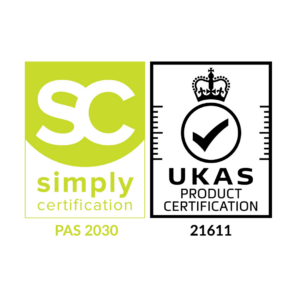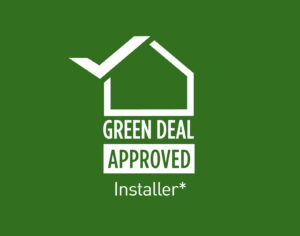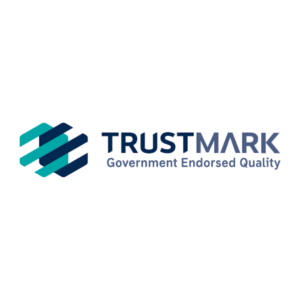Internal Wall Insulation (IWI) plays a vital role in enhancing the energy efficiency and thermal performance of buildings, particularly in the context of the United Kingdom. As the UK continues to prioritize sustainability, reducing carbon emissions, and improving energy efficiency, IWI has emerged as a valuable solution for upgrading existing properties.
We aim to provide a comprehensive overview of IWI in the UK, exploring its benefits, challenges, installation processes, cost considerations, and environmental impact. Additionally, we’ll delve into case studies of successful IWI projects, examine financing options, and discuss future trends and policy implications for this innovative insulation method. By shedding light on the various aspects of IWI, we aim to equip you with a deeper understanding of its significance and potential for transforming the energy efficiency landscape in the UK with NXTGEN Futures.
NXTGEN Futures have an experienced, and dedicated team that specialise in retrofit and installing Internal Wall Insulation systems under the PAS2030 regulations to ensure that all jobs meet the necessary standards.
As per the regulations NXTGEN Futures takes a fabric first approach and as such pride ourselves on our insulating works. We have in-house staff trained at level 2, 3 and 5 so far so we have a deeper understanding of retrofit.
Our Accreditations







1. Introduction to Internal Wall Insulation (IWI)
What is Internal Wall Insulation (IWI)?
Internal Wall Insulation (IWI) is a method of insulating the walls inside a building to improve energy efficiency and reduce heat loss. It involves adding insulation materials to the internal surfaces of external walls, which helps to maintain a more comfortable temperature indoors, especially during cold weather.
The Importance of Insulating Internal Walls
Insulating internal walls is crucial for several reasons. Firstly, it can significantly reduce heat loss, leading to lower energy bills and a smaller carbon footprint. It also helps to regulate indoor temperatures, making your home warmer in winter and cooler in summer. Additionally, IWI can improve the acoustic performance of your home by reducing noise transmission between rooms.
2. Benefits and Challenges of IWI in the UK
Advantages of Internal Wall Insulation
There are several benefits of installing IWI in the UK. Firstly, it can improve the overall energy efficiency of your home, reducing the amount of heat lost through the walls. This can lead to substantial savings on heating bills, as well as a more comfortable living environment. IWI is also a versatile solution, suitable for both solid and cavity walls. Moreover, it can often be installed without major disruption to the occupants.
Challenges and Considerations for IWI in the UK
While internal wall insulation offers numerous advantages, there are some challenges to be mindful of. One such challenge is the potential reduction in living space, as the insulation takes up room within the internal area. There may also be issues around the compatibility of IWI with existing features, such as electrical fittings and skirting boards. It is crucial to address these considerations and consult with professionals to ensure a successful installation.
3. Types of Internal Wall Insulation Systems
Solid Wall Insulation (SWI)
Solid Wall Insulation is suitable for homes with solid walls, which may lack a cavity. It involves fixing insulation boards directly onto the internal walls, typically covered with a skim coat or plaster finish. SWI can significantly improve thermal performance and is available in various materials, including rigid foam, mineral wool, and natural products like wood fiber.
Cavity Wall Insulation (CWI)
Cavity walls have an empty space between the inner and outer layers. Cavity Wall Insulation involves injecting insulation material into this gap, either through drilled holes or by removing bricks temporarily. While CWI installation is more common externally, it can also be done internally, although it may require more specialized techniques.
Internal Dry Lining
Internal Dry Lining is a popular method that involves fixing insulated plasterboard directly onto the existing internal walls. The insulated plasterboard provides both insulation and a finished surface. This approach is suitable for homes with relatively good wall condition and minimal moisture issues.
Vacuum Insulation Panels (VIPs)
Vacuum Insulation Panels are thin, highly efficient insulation boards that can provide excellent thermal performance. They are particularly useful when space is limited, as they have a much thinner profile compared to other insulation materials. VIPs are typically combined with other insulation systems to achieve optimal results.
4. The Process of Installing IWI in UK Homes
Assessment and Planning Stage
Before starting the installation, a thorough assessment of the property is essential to determine the most appropriate IWI system. Considerations include wall type, existing conditions, and the desired level of insulation. A professional assessment helps identify potential issues and ensures a tailored approach.
Preparation and Surface Treatment
Once the assessment is complete, preparations for installation begin. This involves removing any existing wall coverings and addressing any surface imperfections or moisture issues. The walls may also require treatment to improve adhesion and ensure a successful installation.
Insulation Installation Techniques
The chosen IWI system is then installed, following the manufacturer’s guidelines and best practices. This may involve attaching insulation boards or plasterboard, ensuring a secure and continuous layer of insulation. Careful attention should be given to details, such as ensuring proper insulation around windows and doors.
Finishing and Decoration
After the insulation is installed, the walls are finished with a suitable surface treatment, such as plastering or painting. This step not only provides a visually appealing result but also protects the insulation and ensures its longevity. The finishing touches make your newly insulated walls ready to be enjoyed for years to come.
Remember, when it comes to IWI, consulting professionals with expertise in insulation installation is highly recommended for a safe and effective outcome. So, get ready to cozy up your home and bid farewell to those chilly drafts!
5. Cost Considerations and Financing Options for IWI
Cost Breakdown of IWI Installation
Installing internal wall insulation (IWI) can be a cost-effective way to improve the energy efficiency of your home. The overall cost of IWI installation depends on various factors such as the size of your property, the type of insulation material used, and the complexity of the project.
A typical cost breakdown for IWI installation includes the cost of insulation materials, professional installation fees, and any additional expenses for scaffolding, removal of fixtures, or repairs. It’s important to obtain quotes from multiple contractors to ensure you’re getting a fair price.
Government Grants and Funding Schemes
The UK government provides various grants and funding schemes to support energy-efficient home improvements, including IWI. The Energy Company Obligation (ECO) scheme and the Green Homes Grant are two significant initiatives that offer financial assistance to eligible homeowners.
These programs can help offset the cost of IWI installation, making it more affordable for homeowners. However, it’s important to note that eligibility criteria and funding availability can vary, so it’s advisable to check the official government websites or consult with a professional for up-to-date information.
Private Financing Options
If you’re not eligible for government grants or funding schemes, there are private financing options available for IWI projects. Banks, building societies, and specialist lenders may offer loans or financing solutions tailored to energy-efficient home improvements.
Before taking on any private financing, make sure to carefully consider the terms, interest rates, and repayment options. It’s always a good idea to compare different offers and seek professional financial advice if needed.
6. Energy Efficiency and Environmental Impact of IWI
Reduction in Heat Loss and Energy Consumption
One of the key benefits of IWI is its ability to significantly reduce heat loss from your property. By insulating the internal walls, you create a thermal barrier that helps to retain heat within your home. This means you’ll need less energy to maintain a comfortable temperature, resulting in lower heating bills.
The improved energy efficiency offered by IWI can make a noticeable difference in your home’s overall comfort, especially during colder months. It also reduces the demand for fossil fuel-based energy sources, contributing to a greener and more sustainable future.
Carbon Emission Reduction
By reducing heat loss and energy consumption, IWI also helps to lower carbon emissions associated with residential properties. Burning fossil fuels for heating and energy production releases carbon dioxide, a greenhouse gas that contributes to climate change.
Using IWI to improve the energy efficiency of your home can make a significant impact in reducing your carbon footprint. It’s an effective way to contribute to the global effort of combating climate change and protecting the environment.
Impact on Indoor Air Quality
While IWI provides energy-saving benefits, it’s also important to consider its impact on indoor air quality. Proper ventilation is crucial to maintain a healthy living environment. When installing IWI, it’s important to consider effective ventilation systems that ensure a continuous flow of fresh air.
Properly designed and installed IWI systems can help maintain good indoor air quality by reducing drafts and preventing moisture buildup. Consult with professionals to ensure your IWI project incorporates appropriate ventilation measures to guarantee a healthy and comfortable living space.
7. Case Studies: Successful IWI Projects in the UK
Residential Property in London
In a residential property in London, IWI was installed to combat heat loss and reduce energy bills. The project achieved significant energy savings, with the homeowner reporting a noticeable improvement in the comfort of their home. The installation also enhanced the property’s aesthetic appeal, as the internal insulation was seamlessly integrated into the existing interior.
Social Housing Estate in Manchester
A social housing estate in Manchester underwent an IWI retrofit to improve the energy efficiency of the buildings. The project was part of a larger sustainability initiative, aiming to reduce carbon emissions and lower heating costs for the residents. The IWI installation successfully achieved these goals, providing warmer and more energy-efficient homes for the residents.
Commercial Building Retrofit in Birmingham
A commercial building retrofit in Birmingham involved the installation of IWI to enhance the energy efficiency of the premises. The project resulted in significant savings on heating and cooling costs, as well as improved thermal comfort for the occupants. The retrofit also contributed to the building’s overall sustainability profile, aligning with the company’s commitment to environmental responsibility.
8. Future Trends and Policy Implications for IWI in the UK
Government Initiatives and Regulations
As the UK aims to achieve its carbon reduction targets, government initiatives and regulations are likely to play a crucial role in promoting and regulating energy-efficient home improvements, including IWI. It’s anticipated that there will be increased incentives and stricter regulations to drive the adoption of IWI across the country.
Technological Advancements in IWI
Technological advancements in insulation materials and installation techniques are continually improving the effectiveness and ease of IWI projects. Innovations such as aerogel insulation and advanced vapor barriers are anticipated to make IWI even more efficient and cost-effective in the future.
Integration with Renewable Energy Systems
The integration of IWI with renewable energy systems, such as solar panels and heat pumps, offers an exciting opportunity for further energy efficiency and sustainability. Combining IWI with renewable energy sources can create highly efficient and eco-friendly homes that significantly reduce reliance on traditional energy sources.
As the UK continues to prioritize energy efficiency and carbon reduction, the future of IWI looks promising, with increasing support and advancements likely to drive its widespread adoption.In conclusion, internal wall insulation (IWI) offers a practical and effective solution for improving the energy performance and comfort of buildings in the UK. With its numerous benefits, including reduced heat loss, lower energy consumption, and potential cost savings, IWI has gained recognition as a valuable retrofitting option. By understanding the different types of IWI systems, the installation process, and available financing options, homeowners and building professionals can make informed decisions to enhance the energy efficiency of their properties. As the UK continues to prioritize sustainability and carbon reduction, IWI is expected to play a crucial role in achieving these goals. Embracing IWI and its future advancements will contribute to a greener and more energy-efficient built environment for generations to come.
Internal Wall Insulation FAQ
1. Is internal wall insulation suitable for all types of buildings?
While internal wall insulation can be applied to various types of buildings, it is important to consider the specific characteristics and requirements of each property. Solid wall insulation (SWI) is typically more suitable for older buildings with solid walls, while cavity wall insulation (CWI) is suitable for properties with cavity walls. It is recommended to consult with a qualified professional to assess the feasibility and compatibility of internal wall insulation for your specific building.
2. Will internal wall insulation affect the indoor living space?
Internal wall insulation may slightly reduce the indoor living space, as the insulation material is applied to the internal surface of the walls. However, the impact on usable space is generally minimal. It is crucial to choose appropriate insulation systems and thicknesses to ensure a balance between energy efficiency and maintaining a comfortable living environment.
3. How much does internal wall insulation installation cost?
The cost of internal wall insulation installation can vary depending on several factors, including the size of the property, the type of insulation system chosen, and any additional preparatory work required. The cost may also vary based on geographical location and the specific contractor chosen. It is advisable to obtain multiple quotes and consider available grants or financing options to help offset the installation costs.
4. Are there any government incentives or grants available for internal wall insulation?
Yes, the UK government offers various incentives and grants to encourage the uptake of energy-efficient measures, including internal wall insulation. These incentives may include the Green Homes Grant, Energy Company Obligation (ECO) scheme, and other local or regional grants. It is recommended to visit government websites or consult with local authorities to explore the available funding options and eligibility criteria.
